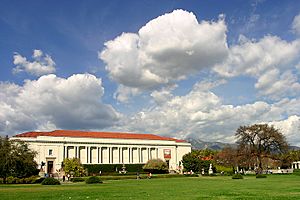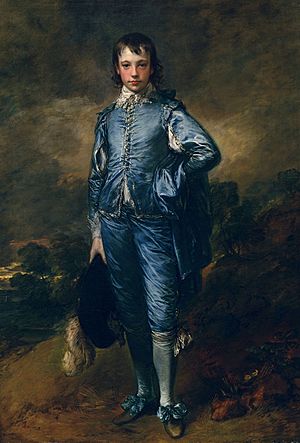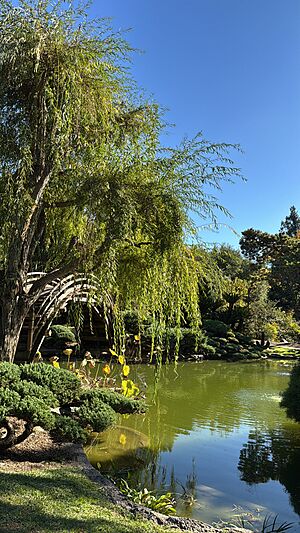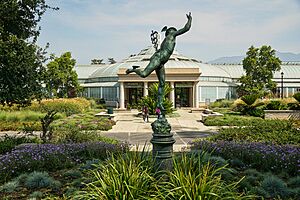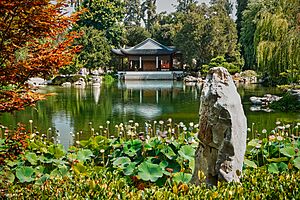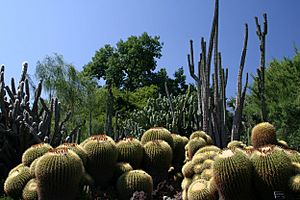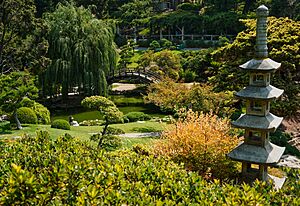Huntington Library facts for kids
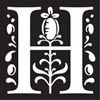 |
|
| Founded | 1919 |
|---|---|
| Founders | Henry E. Huntington, Arabella Huntington |
| Type | Collections-based research and educational institution |
| Focus | Research, education |
| Location | |
|
Area served
|
Southern California |
|
President
|
Karen R. Lawrence |
| Endowment | $728 million (as of June 30, 2023) |
|
Employees
|
478 |
|
Volunteers
|
1,200 |
The Huntington Library, Art Museum, and Botanical Gardens, often called The Huntington, is a special place in San Marino, California, United States. It was created by Henry E. Huntington and Arabella Huntington. The Huntington is a center for learning and research, with amazing collections.
It has a huge library filled with rare books and old papers. There's also a large art museum that shows European and American art. Plus, it has beautiful botanical gardens that cover about 120 acres, with plants from all over the world. Some famous parts include the Japanese Garden, the Desert Garden, and the Chinese Garden.
Contents
History of The Huntington
Henry Edwards Huntington (1850–1927) was a very important person in the growth of Southern California. He was born in New York and was the nephew of Collis P. Huntington, a famous railroad leader. Henry moved to Los Angeles in 1902.
In 1903, he bought a large piece of land called the "San Marino Ranch." He also bought other lands in the Pasadena and Los Angeles areas. He helped create the City of San Marino, which became a city in 1913. In the same year, he married Arabella Huntington (1851–1924).
Henry Huntington was also in charge of major railway companies. He helped build the public transportation system that connected many communities in Southern California. This helped these areas grow and encouraged trade and tourism.
Arabella greatly influenced Henry's interest in art. They collected many artworks, especially British portraits from the 1700s. Henry Huntington wanted his collections to be shared with everyone. After he passed away in 1927, The Huntington opened to the public in 1928.
In 1985, a fire happened in the Huntington Art Gallery. It damaged some artworks, including a portrait by Sir Joshua Reynolds. The gallery was repaired and reopened in 1986. Many people and groups helped donate money for the cleanup and restoration.
In 2019, The Huntington started a year-long celebration for its 100th birthday. This included special exhibits and a float in the 2020 Rose Parade.
How The Huntington is Managed
The Huntington is led by a team of experts. Here are some of the main leaders:
- President: Karen R. Lawrence
- Chief Financial Officer: Janet Alberti
- Director of the Library: Sandra Brooke Gordon
- Director of the Botanical Gardens: Nicole Cavender
- Director of the Art Museum: Christina Nielsen
The Huntington is one of the richest cultural places in the United States. It has a large fund of over $700 million. This money helps them keep the collections safe and build new facilities. For example, a new education and visitors center opened in 2015.
In 2022, over one million people visited The Huntington. Many researchers and students also used its collections for their studies.
The Huntington Library

The library building was designed in 1920 by architect Myron Hunt. It looks like a Mediterranean-style building. The library holds a huge collection of rare books and old papers. These focus on British and American history, literature, art, and the history of science.
The collection includes items from the 11th century to today. There are 7 million manuscript items, over 400,000 rare books, and more than a million photos and prints. Some of the most special items are:
- One of only eleven vellum copies of the Gutenberg Bible.
- The Ellesmere manuscript of Chaucer's The Canterbury Tales from around 1410.
- Letters and papers from famous American leaders like George Washington and Abraham Lincoln.
- The only library in the world with the first two early printings of Hamlet.
- Benjamin Franklin's own autobiography.
- Isaac Newton's personal copy of his famous science book, with his own notes.
- Early drafts of Henry David Thoreau's Walden.
- John James Audubon's Birds of America.
The library's main hall shows off some of its most amazing rare books and manuscripts. Other parts of the library have changing exhibits. The Dibner Hall of the History of Science has a permanent exhibit about science history. It focuses on topics like astronomy, nature, medicine, and light.
In 2006, The Huntington bought the Burndy Library collection. This made it one of the best places in the world to study the history of science and technology. In 2022, the library also got the writings of American author Thomas Pynchon.
Research at the Library
Students and researchers over 18 can use the library's collections. They need to show they have a good reason to use the materials. The Huntington also gives about 150 grants to scholars each year. These grants help people study history, literature, art, and the history of science and technology.
The library also hosts many talks, conferences, and workshops for scholars. In 1991, The Huntington made its photos of the Dead Sea Scrolls available to all qualified scholars. This was a big step, as access had been limited before.
The Huntington works with the University of Southern California (USC). Together, they have created two research centers. These centers help people study early modern times and the history of California and the American West.
Art Collections
The Huntington has amazing art collections. They are shown in the Huntington Art Gallery and the Virginia Steele Scott Gallery of American Art. There are also special temporary exhibits in other galleries. The galleries also show different photography exhibits throughout the year.
European Art
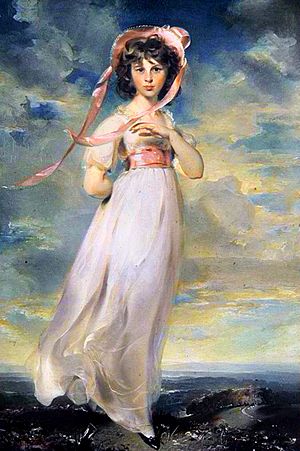

The European art collection is mostly British and French paintings, sculptures, and decorative items from the 1700s and 1800s. These are displayed in The Huntington Art Gallery, which was Henry and Arabella Huntington's home.
The collection also includes Italian and Northern European Renaissance paintings. There are also beautiful 18th-century French tapestries, porcelain, and furniture. Some of the most famous artworks are The Blue Boy by Thomas Gainsborough and Pinkie by Thomas Lawrence.
American Art
The Huntington also has a large collection of American art. This includes paintings, prints, drawings, sculptures, and photos from the 1600s to the mid-1900s. The Huntington only started collecting American art in 1979. This was after they received a gift of 50 paintings.
The Virginia Steele Scott Gallery of American Art opened in 1984. In 2009, this gallery was made bigger and updated. This gave the growing American art collection more space. Famous American artworks include Breakfast in Bed by Mary Cassatt and The Long Leg by Edward Hopper. The collection also has works by Andy Warhol and Robert Rauschenberg. By 2014, the American art collection had about 12,000 works.
In 2014, the library acquired a large mural called Southern California landscape (1934) by Millard Sheets. This painting was originally made for a home in the Hollywood Hills.
New Artworks and Gifts
The Huntington often adds new artworks to its collections. In 1999, it acquired a large collection of items by the artist and designer William Morris. This collection included stained glass, wallpaper, textiles, and over 2,000 books.
In 2005, actor Steve Martin gave $1 million to The Huntington. This money helps support art exhibits and buying new American art. In 2009, Andy Warhol's painting Small Crushed Campbell's Soup Can (Beef Noodle) was donated. In 2011, a fund was created to buy American art made after 1945. The first artwork bought with this fund was Global Loft (Spread) (1979) by Robert Rauschenberg.
In 2012, the museum bought its first major artwork by an African-American artist. It was a 22-foot-long carved redwood panel from 1937 by sculptor Sargent Claude Johnson.
In October 2023, the museum showed a 320-year-old Japanese house. It was once owned by a village leader in Japan. Craftspeople carefully took the house apart, moved it, and put it back together at The Huntington. This was a huge project that took five years.
Botanical Gardens

The Huntington's botanical gardens cover 120 acres. They feature plants from all over the world. Henry Huntington worked hard to make these plants grow well in California's climate. Today, the gardens are used for plant research and for visitors to enjoy.
The gardens are divided into many different themes. These include the Australian Garden, the Camellia Collection, the Children's Garden, the Desert Garden, the Herb Garden, the Japanese Garden, the Lily Ponds, the Palm Garden, the Rose Garden, and the Chinese Garden (Liu Fang Yuan).
The Rose Hills Foundation Conservatory for Botanical Science has a large collection of tropical plants. It also has a section for carnivorous plants. The Huntington has a program to protect rare and endangered plant species. Giant "corpse flowers" (Amorphophallus titanum) have bloomed at the facility many times since 1999. These flowers are famous for their very strong smell.
The Camellia Collection has almost eighty different types of camellia plants. It also has about 1,200 different cultivated varieties, many of which are rare. The Rose Garden has about 1,200 different kinds of cultivars (4,000 individual plants). They are arranged to show how roses have changed over time.
Chinese Garden
The Chinese Garden, called Liu Fang Yuan (Garden of Flowing Fragrance), is the largest Chinese garden outside of China. It opened in 2008. Artisans from Suzhou, China helped build the first part of the garden.
The garden covers about 12 acres. It has man-made lakes with pavilions connected by bridges. Many parts of the garden have special Chinese names. For example, the tea house is called the "Hall of the Jade Camellia." Other pavilions include the "Love for the Lotus Pavilion" and the "Terrace of the Jade Mirror."
The second part of the garden opened in 2014. It added more pavilions and features, like a waterfall and new bridges. There is also a place to display the garden's large collections of penjing and bonsai trees.
Desert Garden
The Desert Garden is one of the biggest and oldest outdoor collections of cacti and other succulents in the world. It has plants from very dry places. Many of these plants were collected by Henry E. Huntington and the garden curator, William Hertrich.
This garden is very important for plant science. It brings together many types of xerophytes (plants that can live in dry conditions). The Desert Garden has grown to be one of the best in the world, with over 5,000 different species.
Japanese Garden
The Japanese Garden was started in 1911. An art dealer named George Turner Marsh sold his Japanese tea garden to Henry E. Huntington. The garden was finished in 1912 and opened to the public in 1928.
The Japanese Garden has three main parts. There's a stroll garden with koi fish ponds and a drum or moon bridge. There's also a dry garden with raked gravel, added in 1968. And there's a traditional tea garden.
The gardens also have a large bell, a real ceremonial teahouse called Seifu-an, and a fully furnished Japanese house. The Zen Garden and the bonsai collections, with hundreds of trees, are also popular. The Bonsai Courts at The Huntington are home to a large collection of bonsai trees. Visitors can also see Suiseki (viewing stones) at the Harry Hirao Suiseki Court.
Other Gardens to Explore
- Australian Garden
- Camellia Garden
- Children's Garden
- Conservatory
- Herb Garden
- Jungle Garden
- Lily Ponds
- Palm Garden
- Ranch Garden
- Rose Garden
- Shakespeare Garden
- Subtropical Garden
Images for kids
-
Wisteria arbor, April 2009
See also
 In Spanish: Biblioteca Huntington para niños
In Spanish: Biblioteca Huntington para niños


